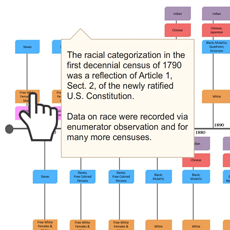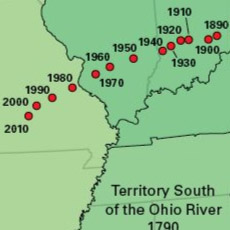Census.gov > Library > Infographics & Visualizations > 2021 > Population Bracketology
Library
Population Bracketology
March 16, 2021
Test your knowledge of population data! Start by choosing your geographic level: metro areas or states. Click on the name in each match-up that you think has the larger population. Green shows a correct answer, red indicates an incorrect answer. When you have opposing names picked for the next round, pick again. See how close you can come to a perfect score of 63. When you are finished, play again or mouse-over results to view the most current population estimates for each pair.
Current Score: |
| Metro Area Population | |
| State Population |
| Your score was: | ||
| XX | out of | 63 |
SOURCE: Vintage 2019 Population Estimates and the International Data Base
NOTES: Winners in each metro area match-up are based on a comparison of the July 1, 2019 population estimates. Metro areas included are the 64 most populous (based on 2019 population) in the 50 states and District of Columbia. Metro areas are based on the September 2018 Office of Management and Budget delineation; see www.census.gov/programs-surveys/metro-micro.html for more information. Abbreviated metro area titles are shown in the display; complete titles are shown in the data table and in the mouse-over available at the end of each game. Data for the 50 states, D.C., and Puerto Rico are based on July 1, 2019 population estimates. For more information about the population estimates see www.census.gov/programs-surveys/popest.html. Mid-year 2019 population estimates for Guam, the Commonwealth of the Northern Mariana Islands, the U.S. Virgin Islands, and American Samoa are from the International Data Base available at https://www.census.gov/data-tools/demo/idb/informationGateway.php.
Recent Data Visualizations
 Population Without Health Insurance
Population Without Health Insurance Population Bracketology
Population Bracketology Measuring Race and Ethnicity Across the Decades: 1790-2010
Measuring Race and Ethnicity Across the Decades: 1790-2010  Where do college graduates work?
Where do college graduates work? Story Maps Illustrate Population Change
Story Maps Illustrate Population Change HIV/AIDS Impact in Africa
HIV/AIDS Impact in Africa Distribution of Hispanic or Latino Population by Specific Origin: 2010
Distribution of Hispanic or Latino Population by Specific Origin: 2010 A Century of Population Change in the Age and Sex Composition of the Nation
A Century of Population Change in the Age and Sex Composition of the Nation  Shifting Occupational Shares
Shifting Occupational Shares Metro Area Density
Metro Area Density Work-Life Earnings
Work-Life Earnings Census Flows Mapper
Census Flows Mapper Migration Between Calif. & Other States
Migration Between Calif. & Other States U.S. Territory and Statehood Status
U.S. Territory and Statehood Status Spoken Languages Other than English
Spoken Languages Other than English Center of Population, 1790-2010
Center of Population, 1790-2010 Population Change by Decade
Population Change by Decade Without A High School Education
Without A High School Education A Decade of State Population Change
A Decade of State Population Change State-to-State Migration for States of 8 Million or More
State-to-State Migration for States of 8 Million or More Population Under 5 Years Old by Congressional District
Population Under 5 Years Old by Congressional District Components of Metro Area Change
Components of Metro Area Change Blooming States
Blooming States Coastline County Population
Coastline County Population Coastline County Population
Coastline County Population I-90 Population Density Profile, 2010
I-90 Population Density Profile, 2010 Second Cities: Keeping Pace with a Booming New York
Second Cities: Keeping Pace with a Booming New York By the Grid: Population Shift to the West and South
By the Grid: Population Shift to the West and South I-10 Population Density Profile, 2010
I-10 Population Density Profile, 2010 Booming Cities Decade-to-Decade, 1830-2010
Booming Cities Decade-to-Decade, 1830-2010 I-5 Population Density Profile, 2010
I-5 Population Density Profile, 2010 Islands of High Income
Islands of High Income The Great Migration, 1910 to 1970
The Great Migration, 1910 to 1970 Following the Frontier Line, 1790 to 1890
Following the Frontier Line, 1790 to 1890 Changing Ranks of States by Congressional Representation
Changing Ranks of States by Congressional Representation Cartograms of State Populations in 1890, 1950, and 2010
Cartograms of State Populations in 1890, 1950, and 2010 Before and After 1940: Change in Population Density
Before and After 1940: Change in Population Density From Physical to Political Geography
From Physical to Political Geography Differential City Growth Patterns
Differential City Growth Patterns I-95 Population Density Profile
I-95 Population Density Profile Increasing Urbanization
Increasing Urbanization Gaining and Losing Shares
Gaining and Losing Shares Top 20 Cities
Top 20 Cities




